- Alaskan Yachts
- Azimut Yachts
- Back Cove Yachts
- Beneteau Yachts
- Benetti Superyachts
- Bertram Yachts
- Boston Whaler
- Broward Yachts
- Buddy Davis Sportfish
- Burger Yachts
- Cabo Yachts
- Catamarans
- Carver Motoryachts
- Center Console
- Chris-Craft Yachts
- Cruisers Yachts
- DeFever Trawlers
- Dufour Sailboats
- Fairline Yachts
- Feadship Yachts
- Ferretti Yachts
- Formula Yachts
- Fountaine Pajot Cats
- Grady-White
- Grand Banks Trawlers
- Hargrave Yachts
- Hatteras Yachts
- Hinckley Picnic Boats
- Horizon Yachts
- Hydra-Sports
- Intrepid Boats
- Jarrett Bay Sportfish
- Jeanneau Yachts
- Kadey-Krogen Trawlers
- Lazzara Yachts
- Lekker Boats
- Luhrs Sportfish
- Marlow Yachts
- Maritimo Yachts
- Marquis Yachts
- McKinna Motoryachts
- Meridian Yachts
- Midnight Express
- MJM Yachts
- Mochi Craft
- Neptunus Motoryachts
- Nordhavn Trawlers
- Nordic Tugs
- Numarine Yachts
- Ocean Alexander Yachts
- Offshore Yachts
- Outer Reef
- Oyster Sailing Yachts
- Pacific Mariner Yachts
- Palmer Johnson Yachts
Beneteau Sense 55 Test Video By BoatTest.com
April 5, 2017 10:57 am
Join us as BoatTest.com takes us on a sea trial of the 2013 Beneteau Sense 55 sailboat:
The following opinions are solely those of BoatTest.com and its test captain.
Hi, Capt. John from BoatTest.com. Today we’re going to test and review Beneteau’s Sense 55. Let’s get underway.
The Sense 55 is an elegant and impressive yacht by anyone’s standards, and I can’t think of a yacht club in the world that would not like to have a boat like this on its membership rolls. When I took my first sail on her, I discovered a little secret about her. She’s remarkably easy to sail.
In the next couple of minutes I’m going to show you what I mean, and see if you don’t agree. The first thing I do before I take a new boat out is familiarize myself with the deck plan. I was pleased to discover that the Sense 55 deck is remarkably clean and uncluttered. Guests won’t have to worry about stubbing their toes on this boat.
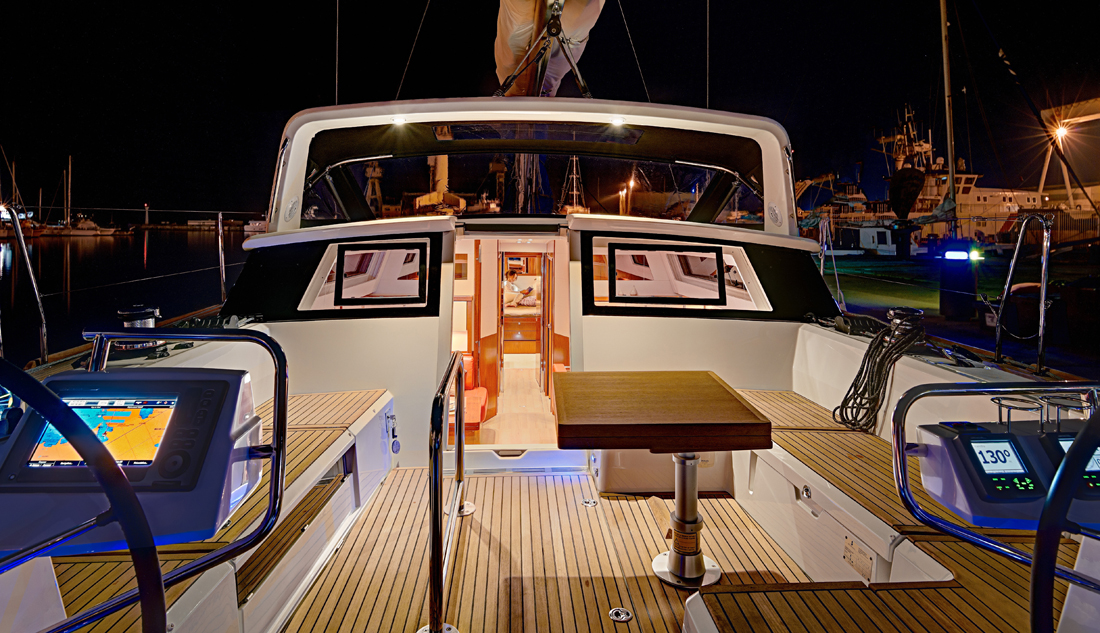
I want to know where her halyards and control lines are. On the Sense 55, they’re color-coded, lead under the deck to keep it safe and emerge by the port and starboard cockpit coaming where they went through labeled cam cleats, so it was easy to find the right line.
Thanks to Beneteau’s optional dock-and go joystick system, leaving the dock is a non-event. Merely lean the joystick in the direction of egress desired, and this 55-foot vessel obeys. The dock-and-go system controls the swiveling propulsion pod with a 3-bladed prop and the bow thruster to send the boat anywhere you want.
Motoring out of the river, I got familiar with the standard 75 horsepower Yanmar diesel. It’s a powerful engine for this size boat. When we got out in the bay, I opened the throttle to the stops and noted that we were going over 10 knots.
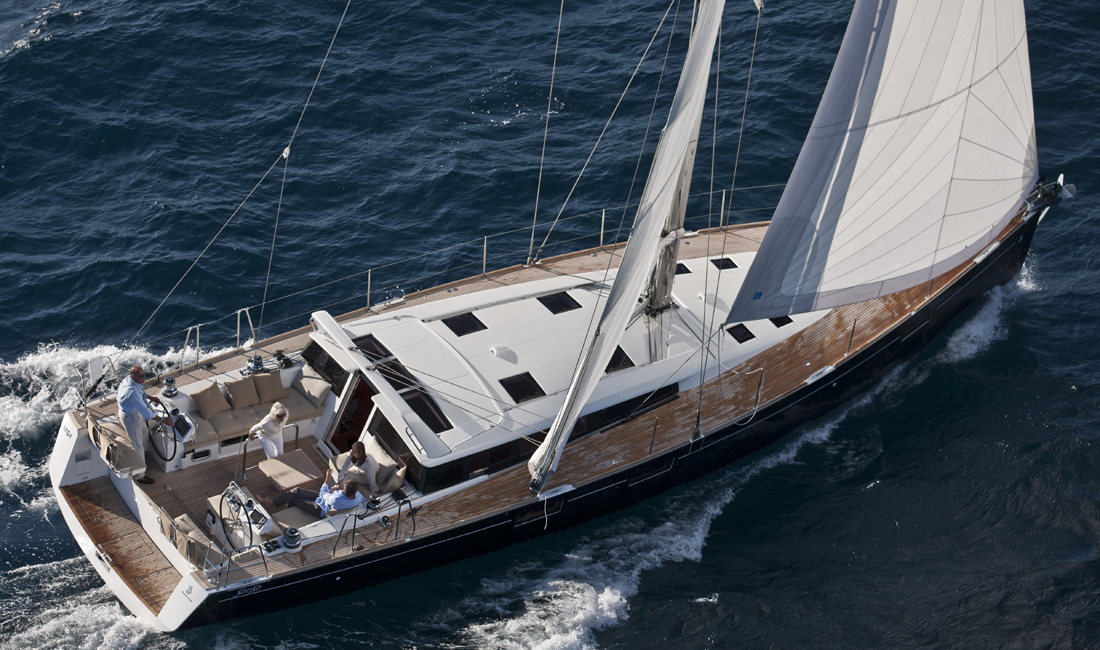
When I’m out sailing with my wife and land lubber friends, I often find that I’m actually single-handing the boat because no one else knows what to do. The Sense 55 was designed for just that possibility.
Once out in the bay, it was time to prepare the main for the hoist. It just takes a minute to unsnap the lazy bag, which holds the main. Our boat had the optional electric-powered winches and autopilot, which allowed me to do everything myself.
After releasing the cam cleat on the main halyard, I wrap the halyard around the forward port winch, pushed the fast button and quickly brought home 66 feet of halyard without any fuss. Once the sail was to block, the halyard cam cleat was closed and the mainsheet trimmed.
Once back behind the port wheel, I released the furling line behind me on the port side, took 3 wraps on the port jib sheet and began to unfurl the headsail. This time I used the slow button, so I could let the furling line run through my left hand to eliminate tangles as the sheet pulled out the sail.
Now we were sailing. Once the boat settled down and we were on course, I took the time to tidy up the cockpit. I stowed the halyard in a locker and the coaming made for that purpose. This keeps the cockpit uncluttered.
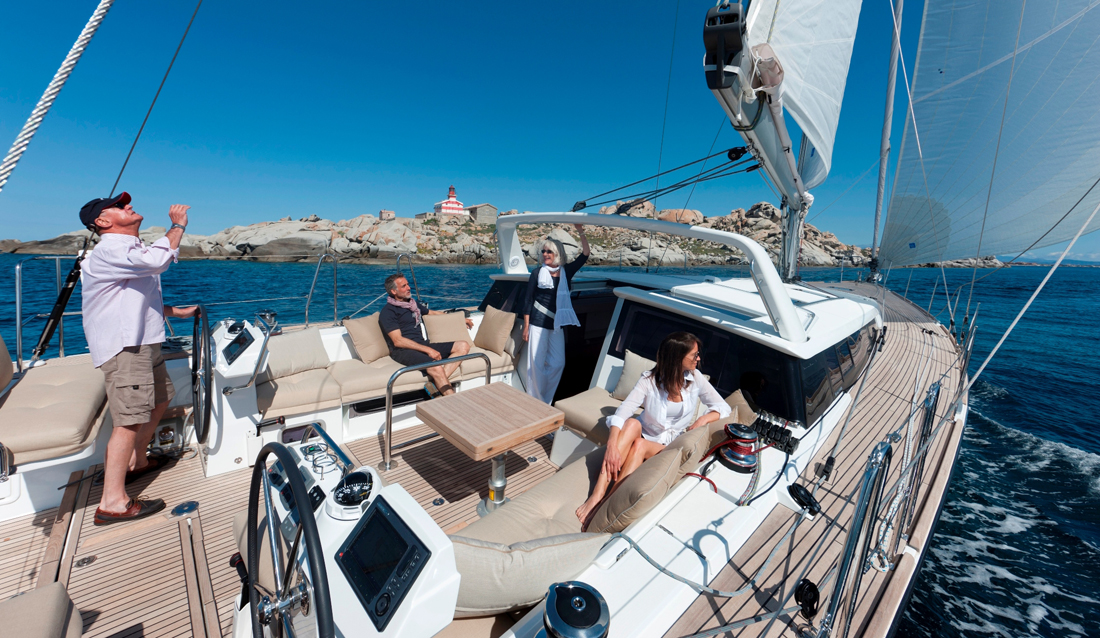
After checking sail trim, I noticed some sag in the head stay, no problem. While steering with my left hand, I pumped up the back stay with my right with the hydraulic pump just behind to starboard.
Because the Sense 55 is so well-balanced, I could often move around the cockpit without the autopilot being on. The boat’s twin rudders just kept us right on course. Tacking is easy on the Sense 55 for the skipper to handle because of its twin wheels and the placement of its sheet winches.
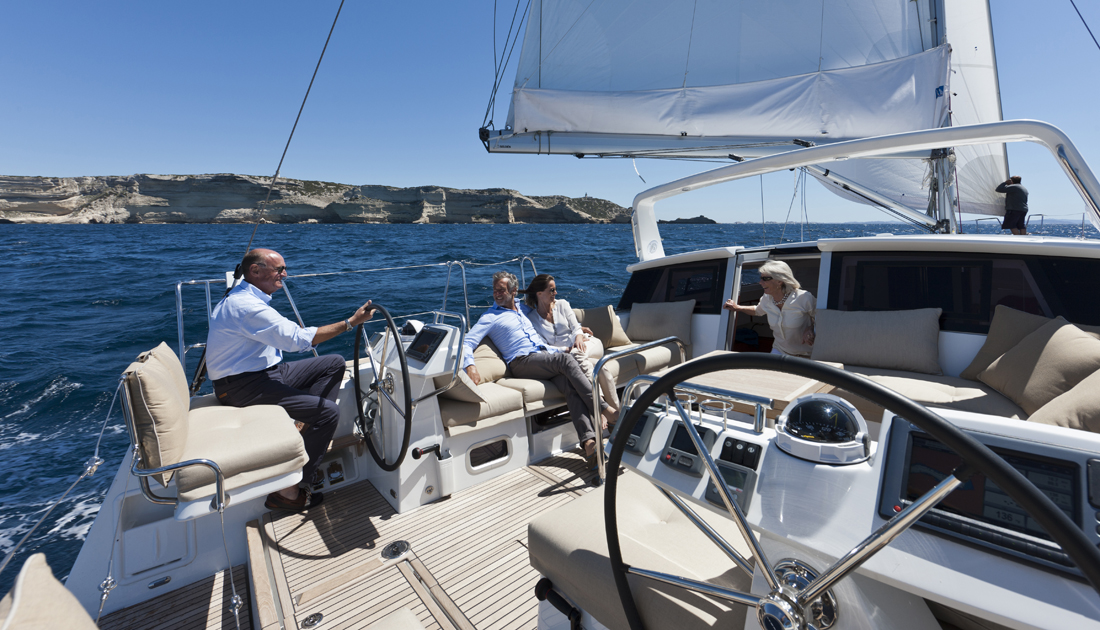
It was just a matter of putting the wheel over, throwing off the lured sheet, walking to the opposite wheel as the boat came through the eye of the wind, taking a few wraps on the new lured winch and powering the sheet home with the push of a button.
The day we sailed the Sense 55, the sea was flat and winds were just 10 to 12 knots true. In these conditions we found that on a broad to close reach, she moved along from about 5.6 knots to 6.8 knots. On the wind, the true wind picked up a bit and the yacht responded in kind, hitting 9 knots close haul.
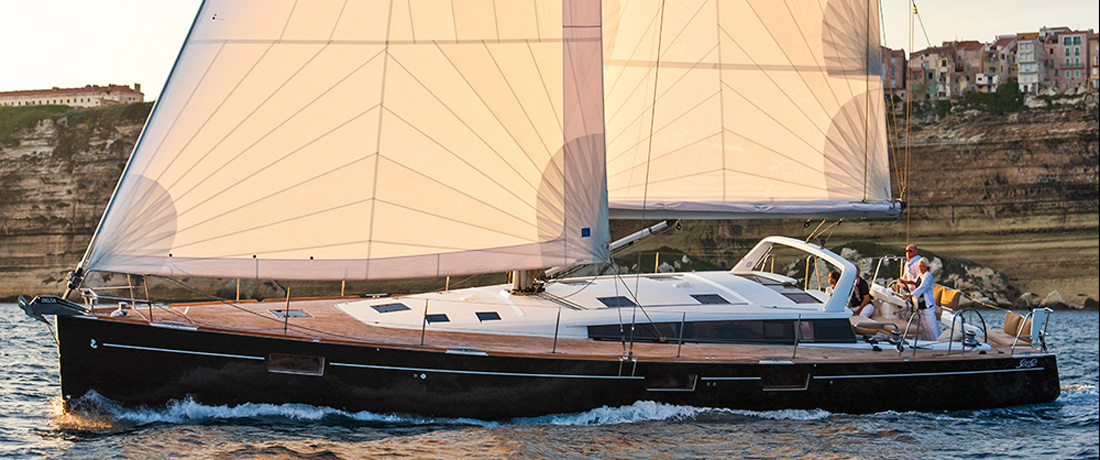
One of the reasons she performed so well to windward is her high aspect rig and relatively light displacement. After a few hours on the water it was time to bring the 55 home. Again its wonderful dock-and-go joystick made backing this 55-footer through the marina a piece of cake.
And moving her sideways into the slip makes docking a pleasure. Having seen the Sense 55 in action, I think you’ll agree with me that virtually anyone who spent any time sailing can handle her with little work and virtually no stress.
So that’s our test and review of the Beneteau’s Sense 55. For BoatTest.com, I’m Capt. John Wenz.






